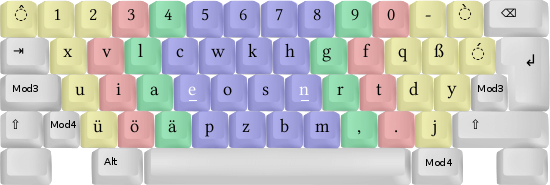Learning Neo is definitely worth it. Once you get used to it you never want to miss it again, but at least in my case I can still type QWERTZ as fast as before. Maybe it takes a minute or two, but you get used to it very quick again.Lustique wrote: So you think it's worth the effort? Currently I'm already struggling to learn QWERTZ (touch-typing-wise) and I think if I learned Neo I could not type on (the keyboards of) normal PCs properly anymore.
And the best feature of Neo in my opinion is the third and fourth layer. Especcially when you're using any UNIX/Linux like OS or programming, as the special characters are very well located. And even when you're not a programmer, you can still profit of it, as the german typografical correct doublequotes „ “, and the english ones ( “ ” ) are available too.

